SNAPshot visits several of France’s premier art institutions that have been recently retrofitted or are about to be renovated.
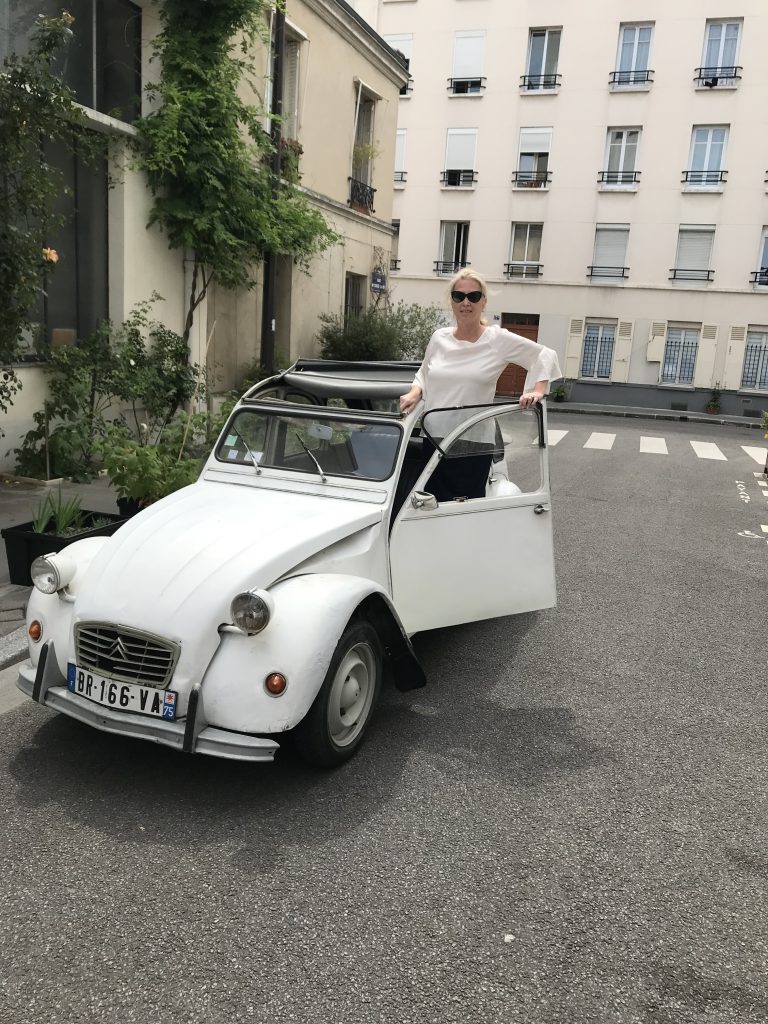
her multi-venue art viewing mission, 2021. Photo: George King
In these precarious times, a trip abroad feels like a veritable escape. So when a window opened that allowed US citizens to go to France, toward the end of summer, I jumped at the opportunity to visit family, friends, and as well as museums, galleries, and other cultural venues that had only been available to me via the internet, printed media, and from friends living outside the U.S.
My first destination was Paris for a brief stay, zipping around in a friend’s rattling Deux Chevaux. With my CDC vaccine card in hand, recognized by the Parisians authorities and most importantly, security guards, during those few days, it allowed me access to two out of three of the institutions at the top of my list before the every 72-hour ritual of the nasal swab became de rigueur.
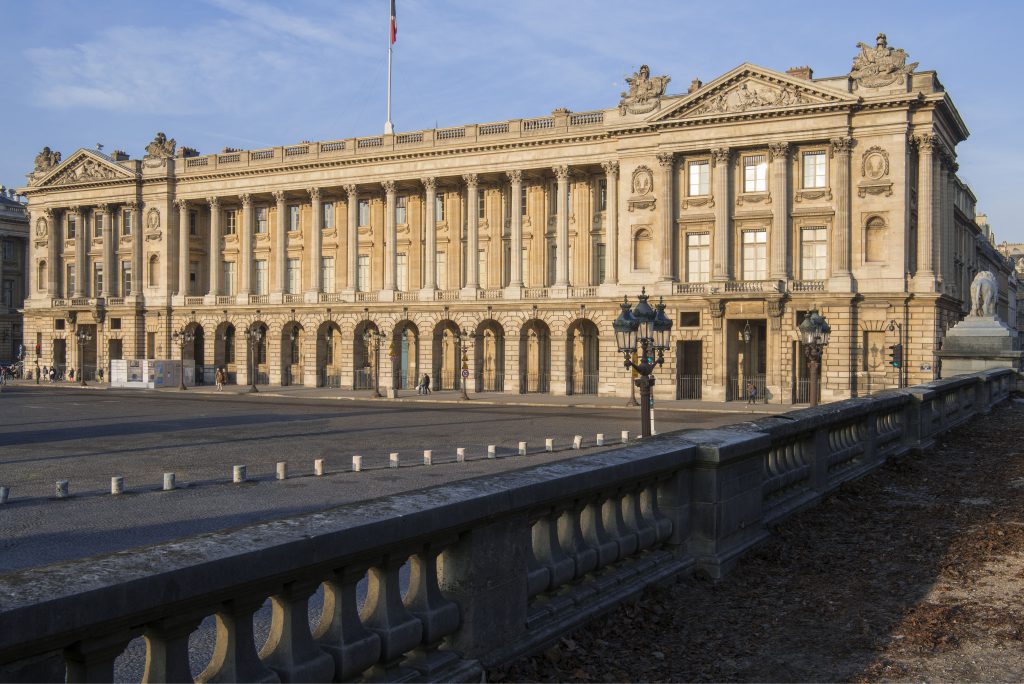
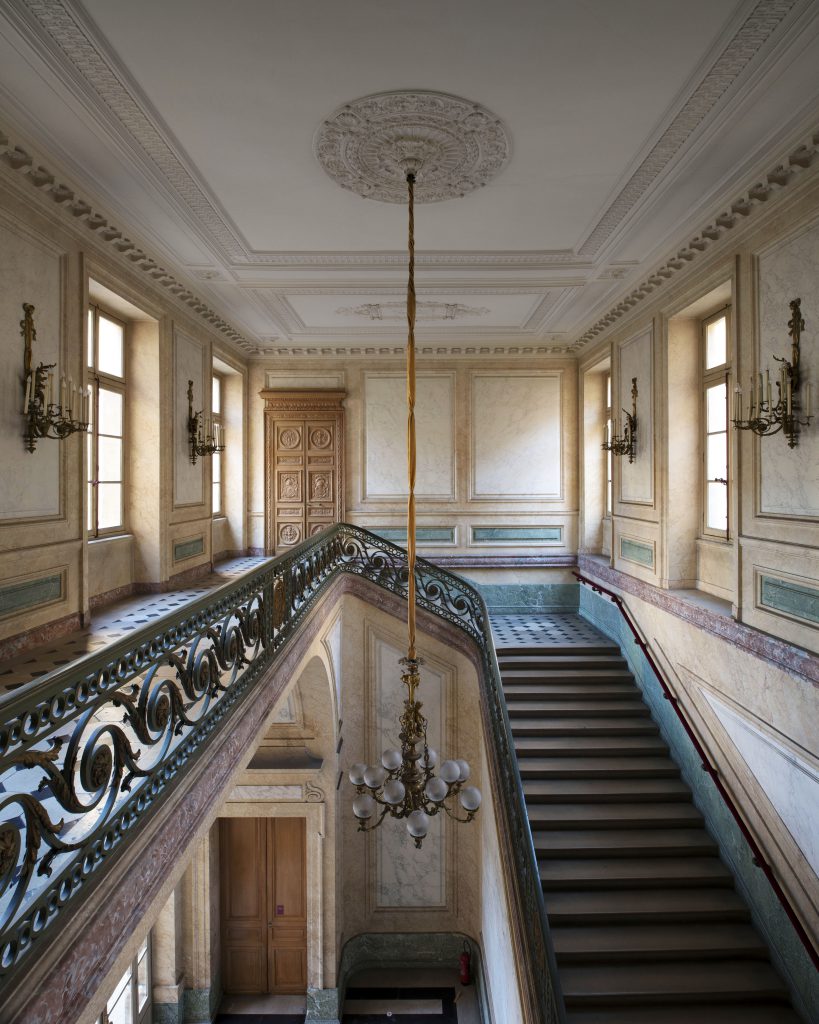
The first stop: The extraordinary restoration of the Hôtel de la Marine on the Place de la Concorde undertaken by architect, Christophe Bottineau and 18th- century specialists, Joseph Achkar and Michel Charrière, which opened its phase one with great fanfare this June. Phase two will present an exhibition featuring the Al-Thani Collection comprising over 600 pieces of jewelry and antiquities from a Qatar dynasty, which will open this October or November.

Visitors to the Hôtel enter through a stately courtyard, to the ticketing area (also known as the Honorary Reception Hall) located in the stewards’ internal courtyard covered by a dazzling multifaceted glass dome composed of triangular prisms and elongated kite facets diffusing and refracting natural light. The hall was designed by architect Hugh Dutton in collaboration with Christophe Bottineau, the chief architect of French historic monuments. One then continues up to the first floor via the marble escalier d’honneur (the Staircase of Honor) that leads to the enfilade of resplendent ceremonial salons bordered with mirrored walls and gilded boiserie panelled doors, and ceilings from which dangle massive crystal chandeliers like clusters of grapes. Voluptuously draped curtains, with gold hand-woven tasseled tiebacks, frame the windows that open onto the colonnaded loggia with spectacular views of the Tuileries gardens and fountains, while the Eiffel Tower, National Assembly, and the Grand Palais appear in the distance.

Belonging to Sheikh Hamad bin Abdullah Al-Thani, the Collection funded the majority of the of the Hôtel de la Marine’s $153 million (€132m) renovation with the help of a $95million (€80m) loan to the French state. As a result, a newly established partnership between the Centre des Monuments Nationaux [CMN] (National Monuments Center)—the government body which manages the 18th-century property—and The Al-Thani Collection— owned by the ruling family of Qatar—also included a gift of $23 million (€20m) that sealed the deal for the collection to be displayed at the Hôtel de la Marine over a 20-year long period.
The Neoclassical Palace, built between 1757 and 1774, was commissioned for Louis XV, and designed by architect Ange-Jacques Gabriel, who also conceived the magnificent public square where it is situated. The original structure, known as the Garde-Meuble de la Couronne, stored the king’s furniture, rugs, and jewels. In 1772, at the request of his steward Pierre-Elisabeth de Fontanieu, the king opened the Garde-Meuble to the public, once a week, to allow for viewing of the royal treasures, thus establishing Frances’s first museum. (The Louvre opened two decades later during the French Revolution in 1793.) After the revolution in 1789, the building was designated for the French Navy Ministry which remained housed there until 2015, except for a period during WW II when it was seized by Nazi Germany for a command post. A testament to significant historical events, it was where the Crown Jewels were stolen during the Revolution in 1792. It was also the site of the signing of the decree that abolished slavery in France and its colonies took place in 1848; and where 1804 Napoleon I and Josephine held their coronation ball. From the vantage point of its colonnaded balconies, the Hôtel de la Marine was witness to cardinal events in the country’s history, including the guillotine executions, among numerous others, of Marie Antoinette and Louis XVI during the Reign of Terror, between 1793–94. From those same views, One could have also observed the installation of the 3,000-year-old Luxor obelisk acquired from Egypt in 1833 from Pasha Muhammed Ali in exchange for a mechanical clock; and looked on the celebrations during the liberation of Paris from Nazi occupation in 1944 that also took place on the Place de La Concorde.
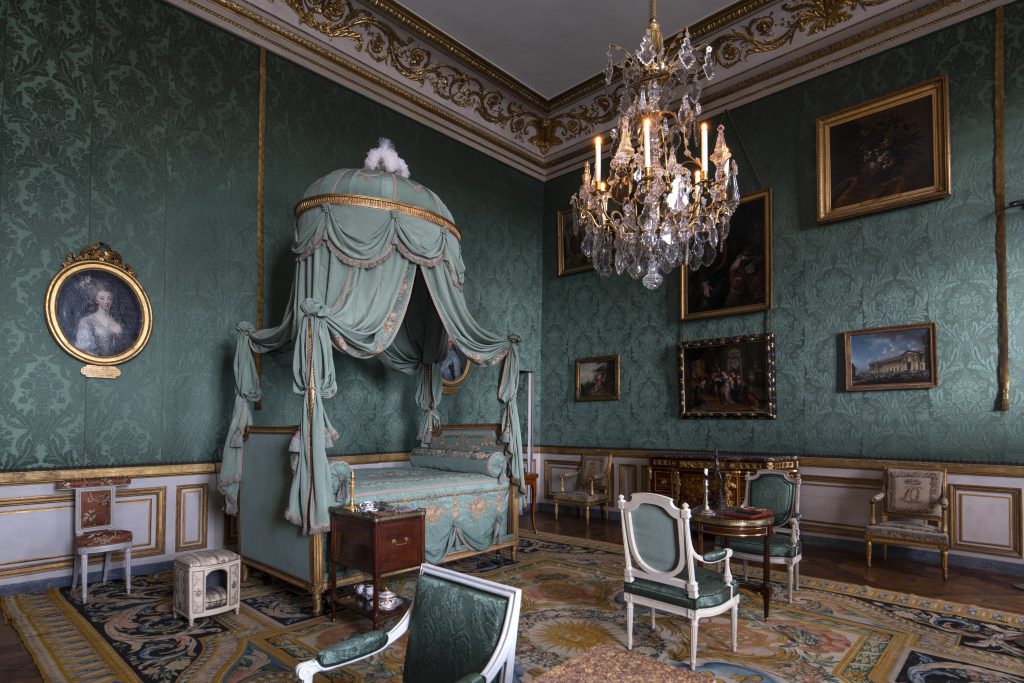
The 14-room apartment from the original building, which included a dining room and lavishly decorated drawing rooms, provided for the stewards of the king’s collection, have been completely revamped as well. Over 300 craftspeople worked on the project ensuring that every layer of paint was removed down to the original 18th-century wall. In many cases, it was discovered that the original textiles or wallpaper had remained intact. In other cases, the original colors of the fabrics, wallpaper, woodwork, or gilding were recreated by hand with the same techniques used in the 18th century. The crimson damasks and brocades that once accentuated the “golden” room, occupied by Fontanieu, have been reconstituted while in the bedroom used by Madame Thierry de Ville-d’Avray—the wife of the second steward of the king’s belongings—both the original baldachin bed and exquisite sea-green silk bedding edged with embroidered white flowers, and topped with a panache of white plumes, have been restored. In keeping with the color scheme, and for historical accuracy, the walls, chairs, and settee of this sumptuous room have all been upholstered in the same colored damask fabric trimmed with crowned molding with gold boiserie and decorated with period paintings and mirrors. Whenever possible, the original furniture, artworks and textiles were sourced by the CMN who managed to acquire a desk that De Fontanieu commissioned for his private quarters by the cabinetmaker Jean-Henri Rieserner and a sofa that once belonged to Marie-Antoinette.
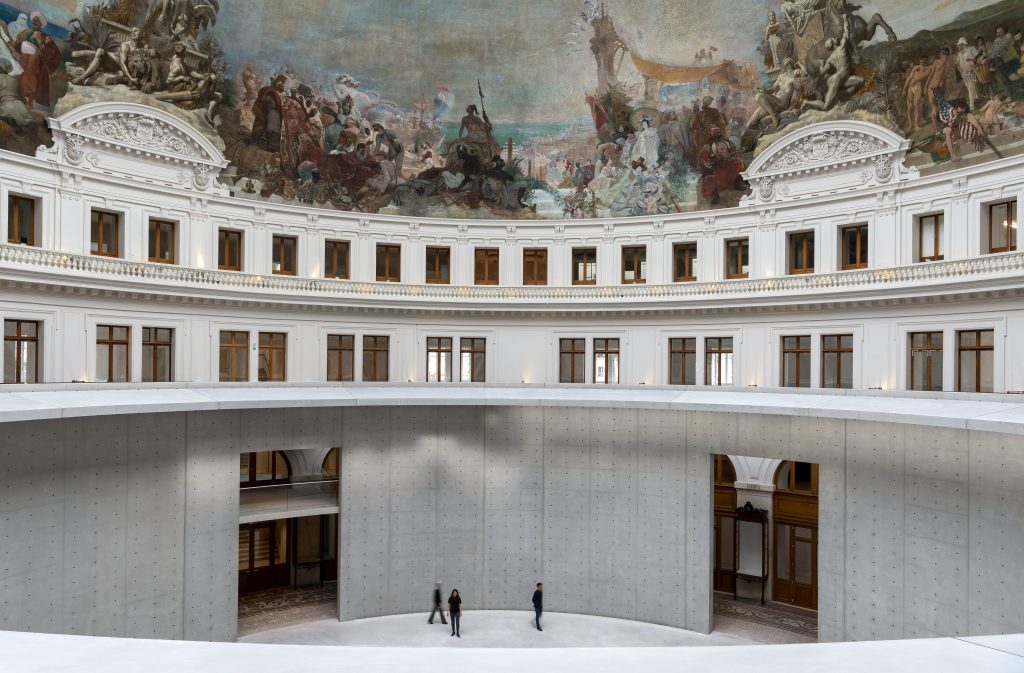
the Pinault Collection of contemporary art. Photo: Marc Domage
The second stop, that same day, was a visit to the Bourse de Commerce, leased by François Pinault for his museum. The French multibillionaire, now at 84, had finally been offered, at the behest of Anne Hidalgo—the current mayor of Paris—a 50-year lease for the building as a venue, in his homeland, to showcase his contemporary art collection. Situated in the heart of the Right Bank, the edifice had served, in its most recent incarnation, as the Paris Commercial Exchange. Much earlier on, the oldest part of the building—the Medici Column on the north side—was commissioned by Queen Catherine de Medici in the 16th century, while several centuries later it functioned as a grain market, after a colossal wooden circular structure was erected at its center in 1763.
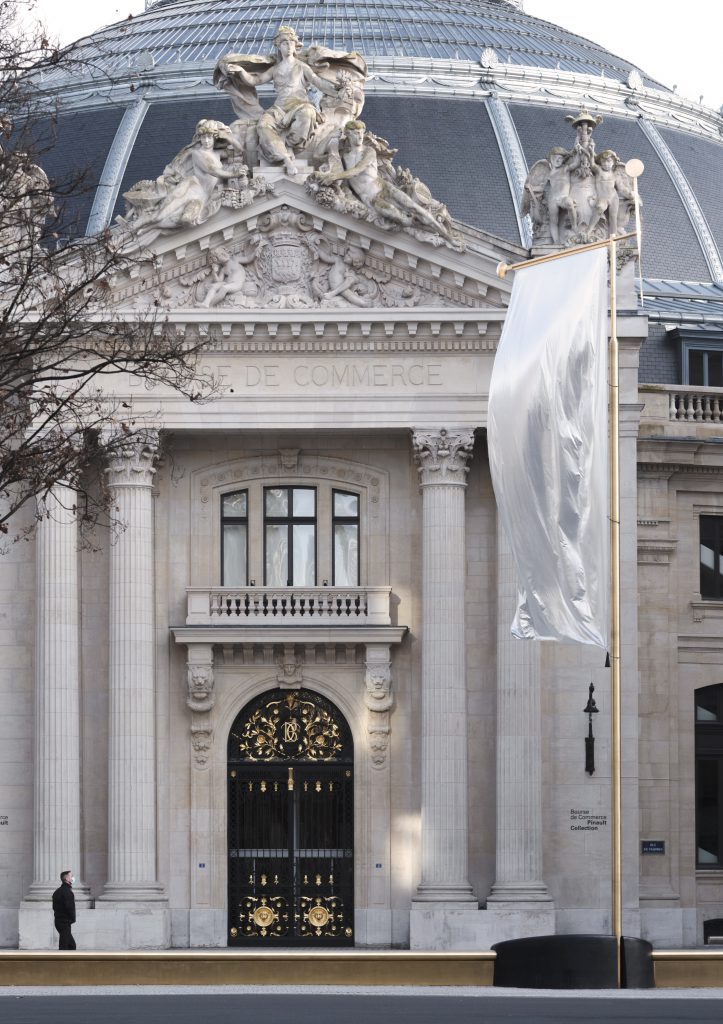
Pinault’s endeavor had been years in the making. For over a decade, his efforts had been thwarted by hurdles due to French political bureaucracy, and by those holding the governmental reins of cultural policy, who at the time, were to direct all funding to the public domain, and to avoid the rising tensions over the privatization of that sector. Pinault had initially conceived that the construction take place on the site of a defunct Renault automobile factory on the Île Seguin, an islet in the Seine, to the southwest of Paris. The 30,000 square-meter museum was slated to open in 2004. However, after endless negotiations and wait times for planning permissions, Pinault uprooted his collection of over 10,000 artworks by nearly 600 artists, and resorted to placing it in Venice—first at the Palazzo Grassi, which he renovated in 2006, and subsequently, the rest at the Punta della Dogana three years later.
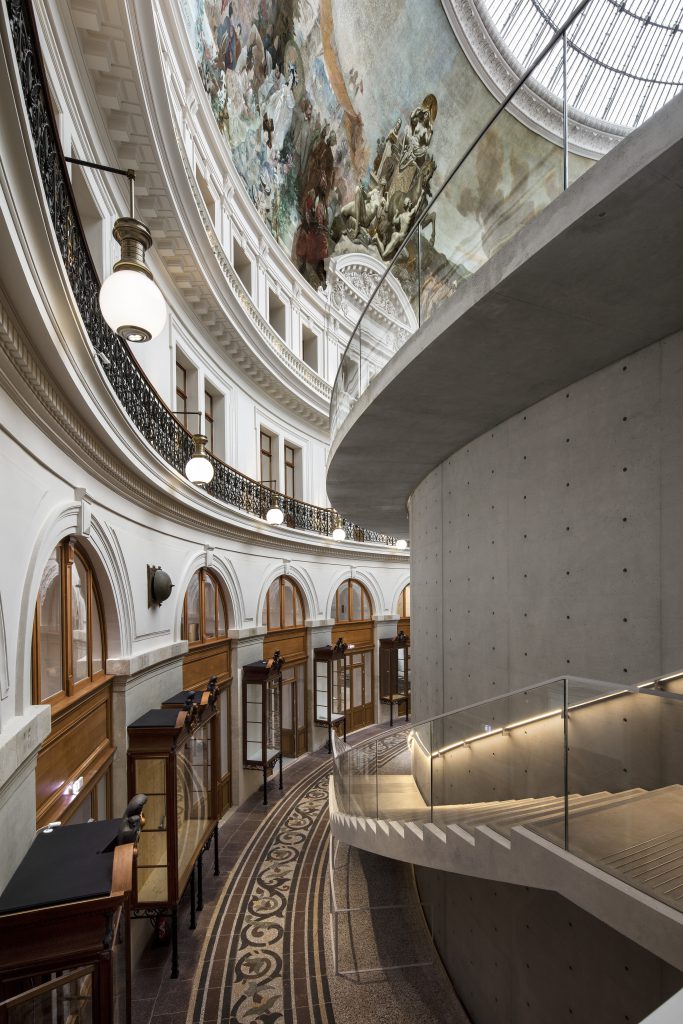
by Tadao Ando. Photo: Patrick Tourneboeuf
What must have added to his frustration, was to have known that his arch-rival Bernard Arnault had obtained an agreement to house his own private collection on a piece of land adjacent to the classical Jardin d’Acclimatation in the Bois de Boulogne in December 2006. Nine months later, planning permissions were granted by the City of Paris, and Frank Gehry’s extravagantly eccentric design was approved. The Foundation Louis Vuitton opened its doors there in October of 2014
Both men are luxury goods tycoons having amassed personal fortunes in parallel arenas. Arnault, 72, is the chairman and chief executive of LVMH Moët Hennessy, the world’s largest luxury goods company, including Tiffany’s, which was just purchased while Pinault founded Kering, a holding company for luxury brands such as Gucci and Yves St.Laurent, and also owns Christie’s Auction House.
The Bourse de Commerce has been magnificently renovated by Tadao Ando. Retrofitted with a concrete cylinder, 29 ½ feet high and approx. 98 feet in diameter, inserted within the building’s central rotunda, the structure extends down to the basement, forming a ring-shaped lounge with an auditorium in the middle. The ground floor level houses a large exhibition space that connects to both upper and lower levels by a set of concrete staircases that wrap around its curved form at the room’s outermost edges. At each level, the staircase leads off to expansive exhibition galleries—ten in total which may be used for one entire exhibition or or separate spaces. Ando’s plan also includes a walkway at the top of the concrete structure where visitors can view the building’s massive glass cupola bordered underneath by a 360-degree mural titled Triumphal France. Created for the 1889 World’s Fair, which once glorified the nation’s 19th century colonial exploits, the fresco depicts various scenes and mapping routes of trade between the five continents.
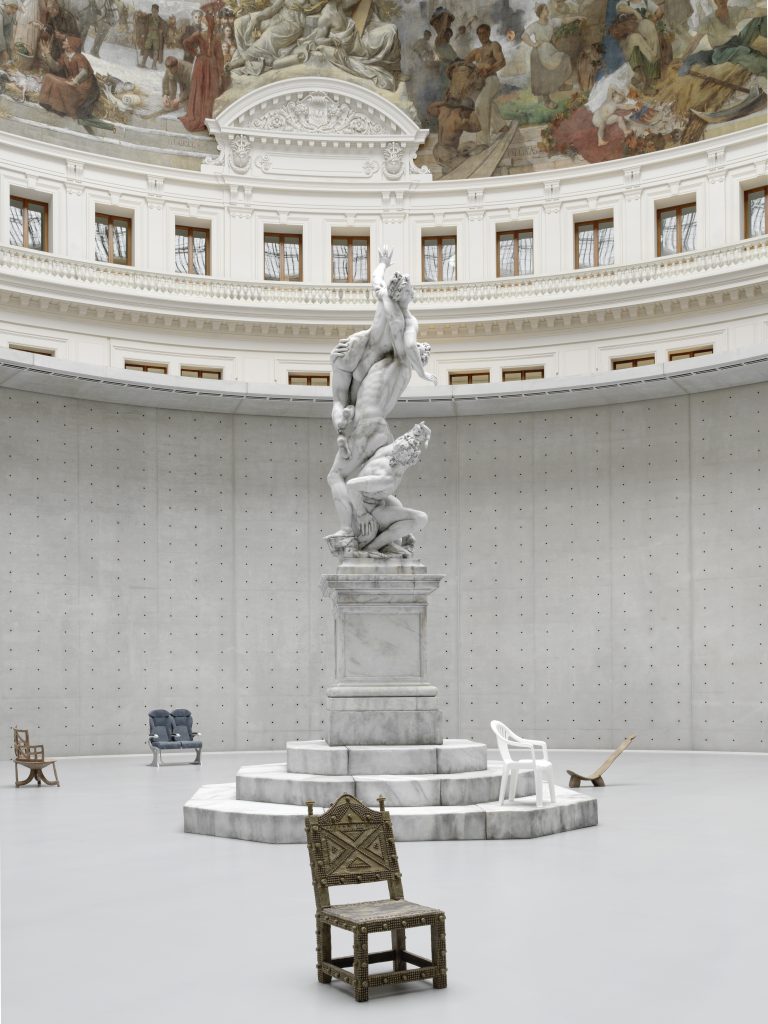
© Urs Fisher, courtesy Galerie Eva Presenhuber, Zurich. Photo: Stefan Altenburger
Installed in the middle of the ground-floor rotunda as part of the museum’s inaugural exhibition, titled Ouverture (Opening), Swiss artist Urs Fischer’s Untitled (2011) comprises nine wax sculptures dispersed around a life-size wax replica of the 16th-century statue The Abduction of the Sabine Women (1579-1582) by Giambologna.The others include an effigy of Italian painter and Fischer’s friend Rudolf Stingel—whose work is also included in the exhibition— and four chairs including: a Mandé seat from Mali, an Ashanti chair from Ghana, a Bwa seat from Burkina Faso, and Oromo chair from Ethiopia, along with a row of two airplane seats, and a garden chair. All the wax sculptures were set alight at the museum’s opening, and are intended to slowly burn for up to six months—until then flames flicker in the daylight that filters down through the glass dome, as streams of melted wax will harden until there is nothing distinguishable is left. Aside from these haunting, lambent signs of transience, the chairs subversively echo the 19th century narratives of the mural, calling to mind the prejudicial and destructive consequences resulting from Western gentrification, displacement, and the impact of modern technology. On the third and last level of the structure, a posse of fifty-two (stuffed) pigeons by Maurizio Cattelan, surveilles the crows of visitors below, reprised from his original version of 200, replete with bird droppings, dispersed throughout the Italian Pavilion for the 1997 Venice Biennale. In other iterations of this piece, the artist has increased the number of birds commonly dubbed “rats with wings” up to 2000, often incurring interpretations that equate his series to baseless fears of unwelcome migrations.
Other works in the exhibition also reflected the ongoing wounds of colonization, as well as systemic racism, such as David Hammons’s installation of thirty works throughout an enfilade of galleries —surprisingly, the African American artist’s first major show in France. Works such as Oh say can you see (2017), a lacerated version of the American flag rendered in the colors of the Pan-African flag, strung up against a wall, and Minimum Security (2007-2020), a metal reconstruction of a prison cell, also conjured a spectral holding cage for slaves. In a parallel vein, Kerry James Marshall was represented by ten affectingly beautiful portraits from the 1990s of African Americans depicted in domestic scenes or pursuing their daily routines. The skin of all the individuals is pointedly rendered in a uniform darkness as a way of underscoring racial identity and presence within our contemporary society. Best elucidated by the artist himself in a recent New York Times interview: “The idea of those paintings is that blackness is non-negotiable in those pictures. It’s also unequivocal—they are black — that’s the thing that I mean for people to identify immediately. They are black to demonstrate that blackness can have complexity. Depth. Richness.”
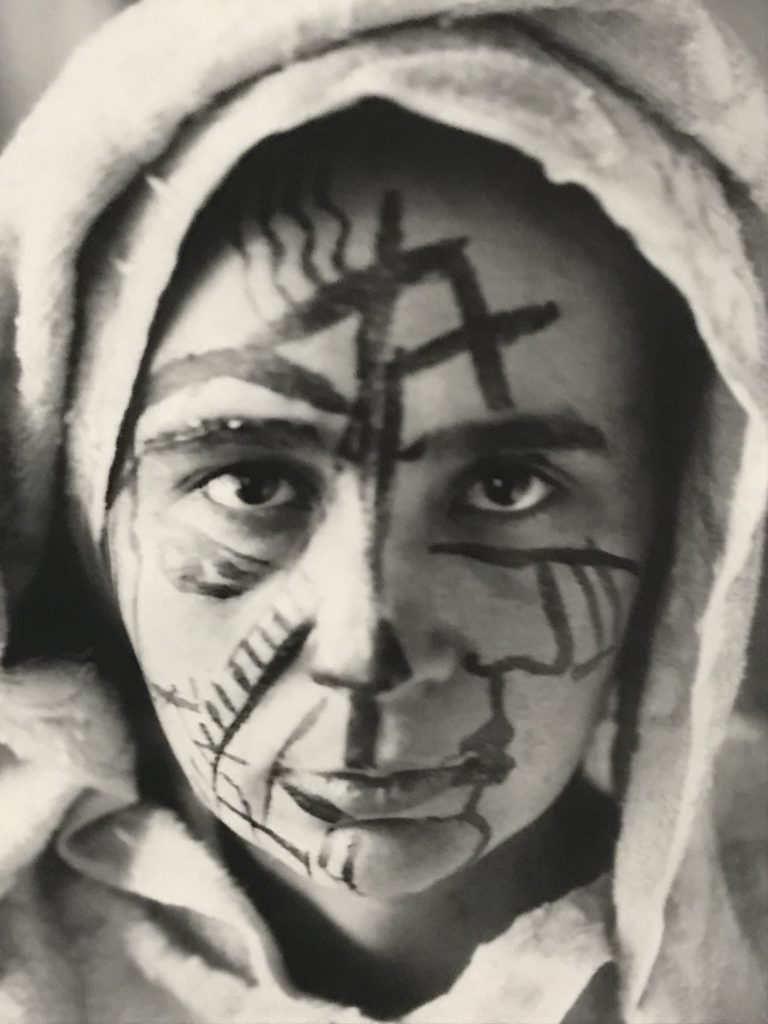
published in Teatr v karrikaturakh, 21 September 1913. Photo Andrei Sarabianov.
State Tretyakov Gallery, Moscow; included in Women in Abstraction at the Centre Pompidou.
Although, it was great opportunity to revisit these landmark works in this spare meditative setting, the exhibition overall felt surprisingly weighted toward a repertoire of well-established US artists, with very few emerging younger artists or underrecognized artists. And to that point, it featured a playlist from the Pictures Generation, in which comprehensive series of photographic works by Louise Lawler, Sherrie Levine, Richard Prince, and Cindy Sherman were lavishly laid out in galleries one after the other. Other works displayed in Ouverture by the usual suspects included Offspring (2018) a mesmerizing sound video by Pierre Huyghe, accompanied by luminous jets of colored smoke; a series of haunting, full-length portraits and skull-like faces painted (2011-15) by Marlene Dumas; an intriguing installation by Thomas Schutte featuring his signature style small and large scale sculptures—busts and figures of men with exaggerated physiognomies that play on sociopolitical themes made with diverse materials, including glass, ceramic, bronze, wood, paint, and fabric.
Among the lesser-known artists were the French multi-media artist, critic, and theorist Michel Journiac, who died in 1995, known for his cutting-edge gender studies from the 1990s. Details from his iconic photographic series 24 heures dans la vie d’une femme ordinaire (24 Hours in the Life of an Ordinary Woman) show Journiac in the guise of a transvestite housewife carrying out various household chores. Tatiana Trouvé’s ongoing series “the Guardians” feature chairs cast in bronze with pillows made of stone and marble, with books or a radio, shoes crafted in onyx—functional objects that have been used and re-used, meant as silent odes to museum guards, as well as to those unacknowledged peacekeepers, watchful caregivers reinforcing presence and endurance through everyday nondescript actions. The multi-media Brazilian Antonia Oba, who has been forced to flee his country due to a controversial video that used religions icons to challenge racial identity , is represented by large-scale oil on canvas figurative paintings and charcoal drawings with corporal and facial shadowy imprints of his body that draw painful spiritual connotations.
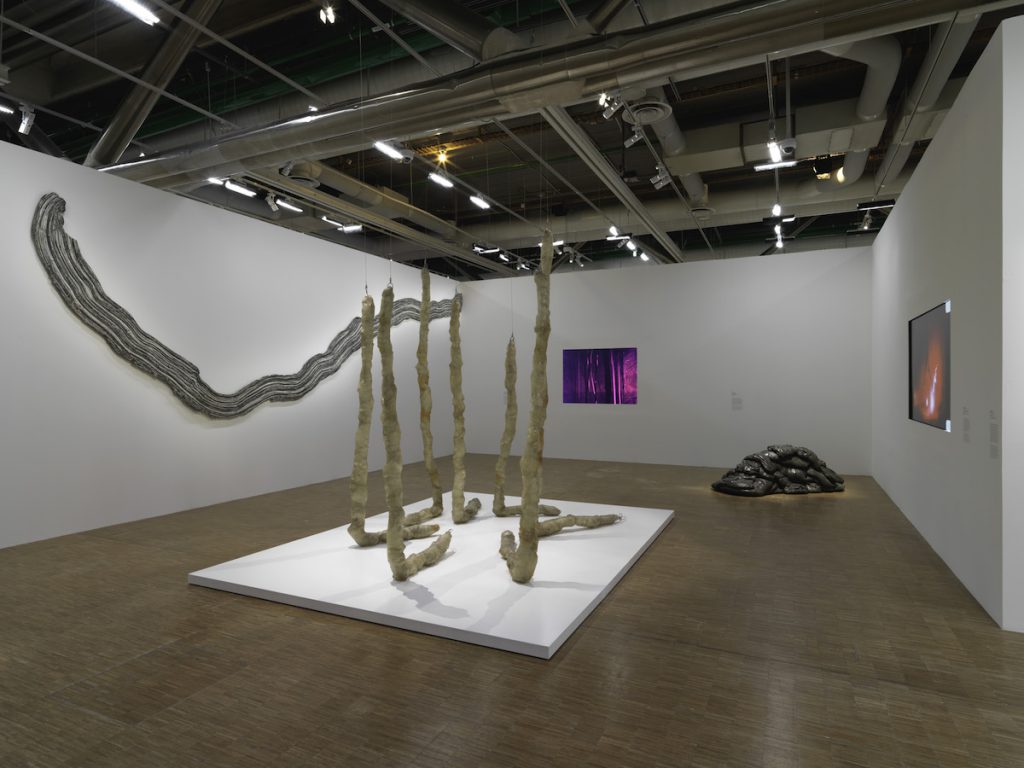
and Lynda Benglis.
The final stop on the Paris agenda was to Beaubourg to see Women in Abstraction, one of the museum’s last exhibitions before it closes for four years for extensive renovations. Women in Abstraction is meant to present the “succession of pioneering practices and to reveal specific contributions of the female artists” and will travel to the Guggenheim Bilbao. [October 2021-February 27, 2022.] Its oddly generic title in English and in French—Elles font l’abstraction literally translated as “they do abstractions [as well as men] felt inadequate. It was meant, I assume as a tongue in cheek retort to male critics and viewers alluding to the lack of recognition of women in the field of Abstract Art. In addition to the rows of black and white head shots of each of the artists, encountered at the entrance, the show’s deserving theme was further undermined by a wall text with an unnecessary quote by Hans Hofmann from 1937 that read “This painting is so good you’d never know it was done by a woman,” next to a work by Lee Krasner, made even before she married Jackson Pollock. Nevertheless, I discovered some great artists that do indeed deserve further recognition.
This exhaustive exhibition, which felt overwhelming at times, presented 106 artists from Europe, Latin America, the Middle East, the United States, and Asia and featured over 500 interdisciplinary works of art from the turn of the century to “about the 1980s,” ranging from painting, film, photography to dance, textiles, and the decorative arts. Ambitious as it was, especially during the pandemic, the choices of artists and works, which were chronologically and thematically grouped, at times seemed arbitrary. The works were mostly grouped by stylistic movements or subject matter, under headings, which included : “Abstracting Reality: the Organic Line”: (Germaine Dulac, Laure Albin- Guillot, Lotte Jacobi, Georgia O’Keeffe); “Abstract Expressionisms” (Janet Sobel, Lee Krasner, Elaine de Kooning, Joan Mitchell, and Helen Frankenthaler); “ Sculpture and Space Games in the 50s” (Marta Pan, Ruth Asawa, Claire Falkenstein, Alicia Penalba, Parvine Curie); Black and White: Op and Pop”(Martha Boto, Eduarda Dadamaino, Běla Kolářova, Louise Nevelson, Bridget Riley); and “Documentary focus: Feminists and Abstraction,” the latter of which clumped Judy Chicago and Harmony Hammond with art critics and historians Briony Fer, Linda Nochlin, Lucy Lippard, among others.
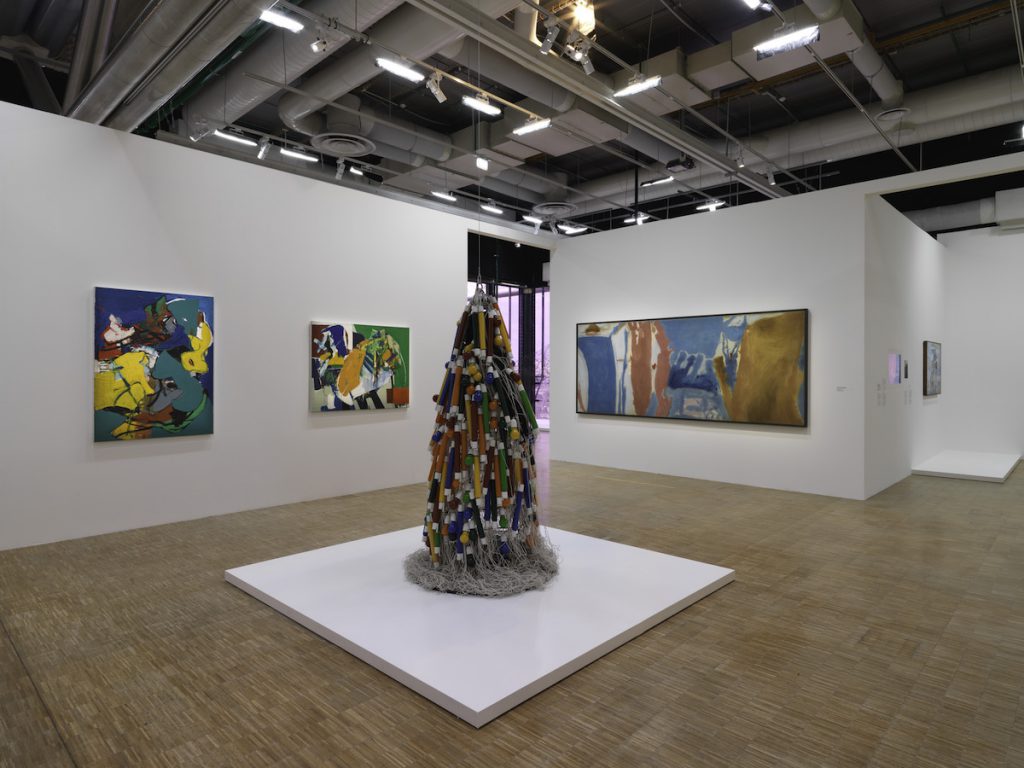
and Helen Frankenthaler.
Some of the more fascinating and navigable galleries were those categorized under “Sacred Symbolism.” One of them featured the astonishing work of the 19th-century British artist and spiritual medium Georgiana Houghton, who in the 1860s and 70s, guided by various spirits and Archangels, produced over 155 watercolors. Called “spirit drawings.” They are composed of multicolored orchestrations of tangled lines, concentric shapes. and undulating filaments that coalesce against backgrounds of contrasting colors.

included in Women in Abstraction at the Centre Pompidou
Also in this section were works by Hilma af Klint, whose striking abstract paintings, produced in the early 20th century, have recently received long overdue recognition, as well as film clips from a magnificent dance by Loie Fuller from the turn of the century. Her swirling body draped in billowing folds of transparent silk, attached to bamboo wands sewn into her sleeves, turned the fabric iridescent as colored lights were projected onto the stage.
Other trailblazers in such arrangements in the show included (not in any particular order) Agnes Martin, Barbara Hepworth, Eva Hesse, Liubov Popova, Sonia Delaunay-Terk, Sophie Taeuber-Arp, Lygia Clark, Marcia Hafif, Magdalena Abakanowicz, Nozomi Tanaka, Howardena Pindell, Lynda Benglis, and Alma Thomas. Two artists from Lebanon that deserve much more recognition are Saloua Raouda Choucair [1916-2017], who pioneered abstract art in Lebanon, and received her fist solo show at the Tate at age 97, and Huguette Caland, a U.S.-based Lebanese artist. Noticeably absent from any of these categories were Grace Hartigan, Judy Pfaff, The transcendentalist Florence Pierce, Miram Shapiro, Beatriz Milhazes, Jay DeFeo, Betty Parsons, Yayoi Kusama, and Dorothy Dehner. among others.

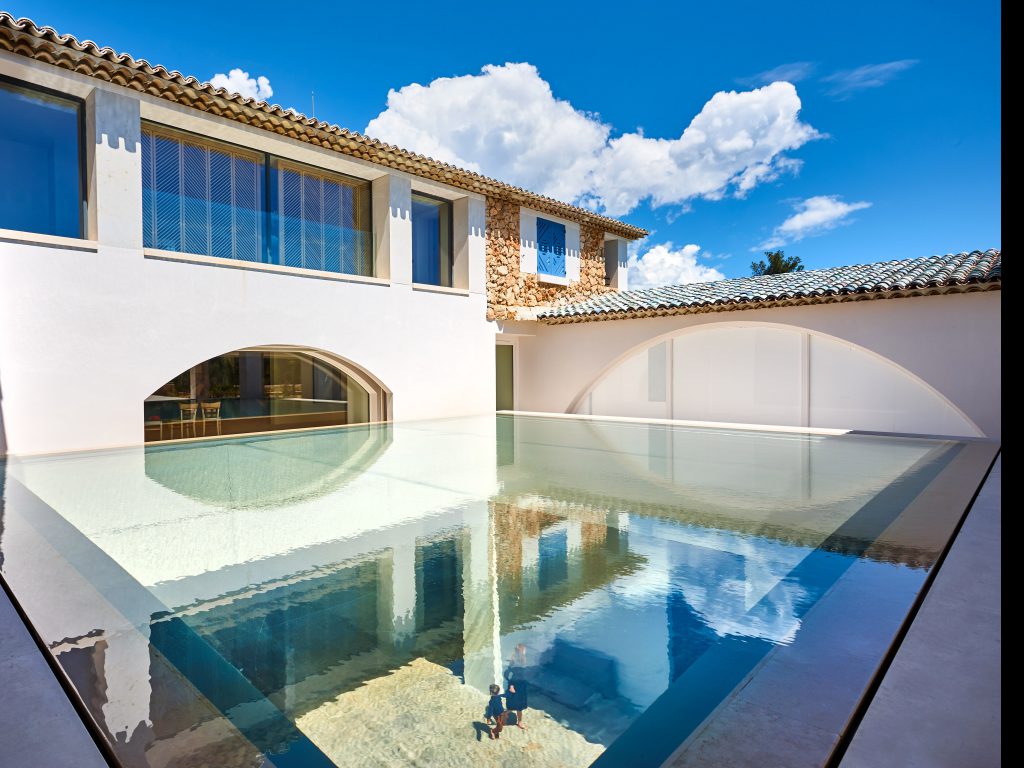
Continuing my travels towards Marseille, I had planned to return to the Foundation Carmignac’s second venue situated on island of Porquerolles but, unfortunately, was unable to this time around. Often described as a “floating forest,” amidst the Mediterranean Sea at the southern tip of the Côte d’Azur. Inaugurated in 2018, the Villa Carmignac resides in a stunningly revamped Provençal farmhouse, with nearly 11,000 square feet of exhibition space that extends 75 feet underground. Founded in 2000, by hedge-fund magnate Édouard Carmignac, the Foundation’s contemporary art collection comprises more than 300 artworks by a diverse group of multigenerational, renowned artists ranging from El Anatsui, Jean-Michel Basquiat, Willem de Kooning, Marlene Dumas, Keith Haring, Jenny Holzer, R.B. Kitaj, Guillermo Kuitca, Jeff Koons, Oleg Kulik, Liliana Porter, and Gerhard Richter to Willem de Kooning, Raoul Dufy and Egon Schiele. Adjoining the Villa is a serene sculpture park with permanent installations of colossal works by Ugo Rondinone, Jeppe Heine, Nils-Udo, and Juame Plensa, and Ed Ruscha are dispersed among the landscape’s wild grasses, vegetation, and 100-year-old olive trees, while overlooking a neighboring vineyard and, in the distance, the cliffs and seashores of the island.
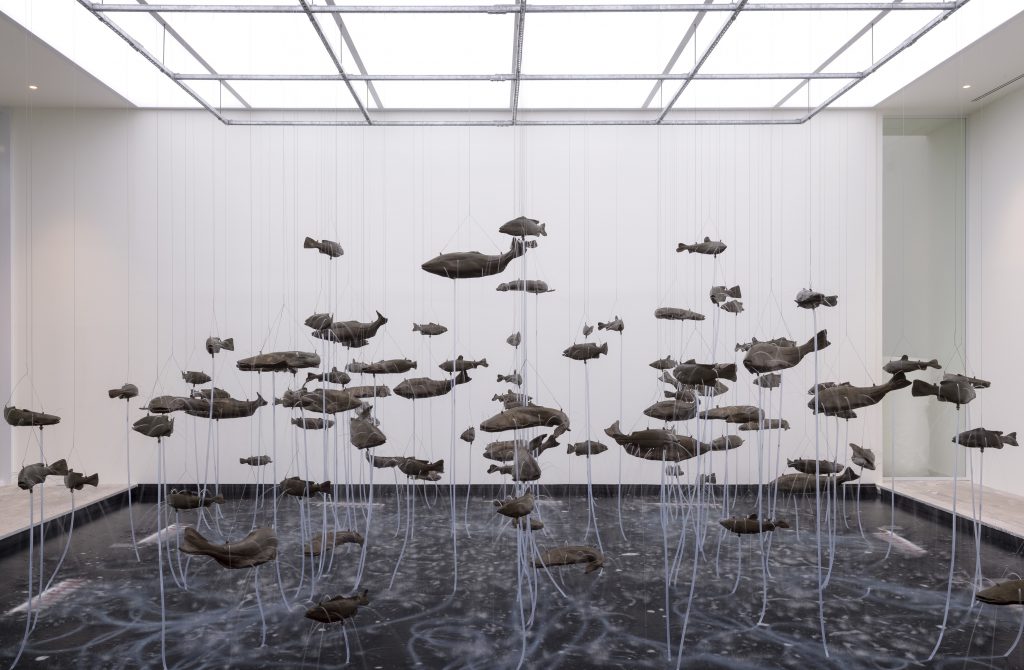
© Fondation Carmignac. Photo: Marc Domage
The Villa’s highly touted exhibition this season, through October, is La Mer imaginaire (The Imaginary Sea).Equally inspired by the architecture of the Foundation spaces, as he was by the collection, Mexico City-based curator Chris Sharp created a subaqueous setting for the show, amplified by the building’s “aquatic ceiling,” a water feature through which light casts undulating reflections and amorphic shadows onto the gallery space below. Fifty-two art works by thirty-three artists drawn from the collection, as well as loaned from international art institutions, have brought the space to life as an atmospheric quasi-aquarium. A kinetic fountain by Bruce Nauman comprises a multitude of hollow bronze fish suspended from wires at various lengths, up to ten feet above a basin. Water is pumped intermittently into each of them by intravenous tubes and then ejected through perforations causing them to spurt animatedly every 15 minutes.

© Miquel Barceló–ADAGP, Paris, 2021. © Fondation Carmignac. Photo: Philippe Chancel
Ressac, a site-specific installation by Michel Barceló in the Foundation’s vaulted gallery simulates an underwater grotto. Made up of successive layers of plaster and clay that cover every surface, the deep tones of paint he used seep into every volume, or build up along the craggy interiors, suggest mineral formations or stalactites. Superimposed on the cave’s interior walls are colorfully painted images of fossilized marine life, fish and crustaceans, as well as traces of human beings. Other works included a lively installation of multicolored silicone jelly fish with tentacles floating down from the ceiling by Israeli artist Micha Laury from 2006. Mexican artist Gabriel Orozco’s geometric sculptures made of polyurethane foam from his 2003 “Spume” series” are wittily juxtaposed with Polynésie, le Ciel,1964, by Henri Matisse’s echoing the bird and/or fish motifs in the French Master’s tapestry. Spanning the main gallery is South-African artists Bianca Bondi The Fall and Rise, 2021, a life-size replica of a whale’s skeleton created out of resin and salt, which within this visionary aquarium reminds us, as well, of the ocean’s endangered life.
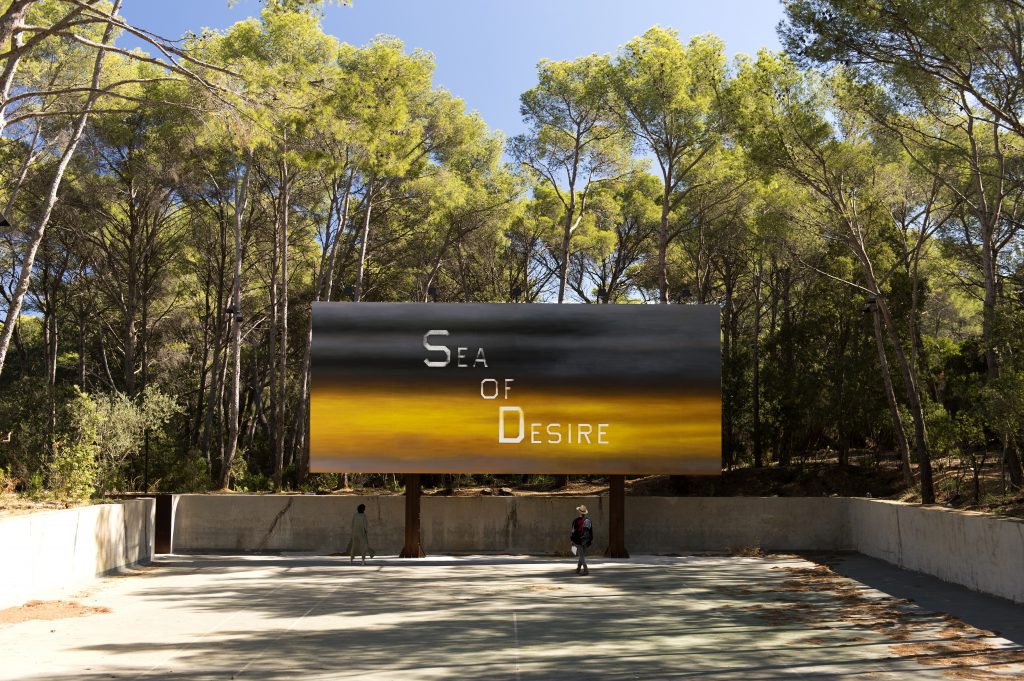

installed at the Palais Longchamp, Marseille.
Marseilles, was my last stop, where I was due for the last swab in one of the numerous retrofitted ship containers dotted along the beaches that serve as covid testing facilities. Aside from a peek through the window of Musée du Savon (a museum devoted to the city’s famous soap), most of the museums were closed, unfortunately, due to Covid restrictions, including the Musée des Beaux Arts located in the Palais de Longchamp, although the architecture and sculptures of the Jardin du Plateau were worth the visit alone. Housed in the right wing of the palace, the museum—The Museum of Natural History resides in the left wing— was built by the architect Henri-Jacques Espérandieu between 1862 and 1869. Initially, the collection of the museum was formed during the Revolution from works seized in churches and upstanding citizens. Currently, its holdings comprise a collection of paintings, sculptures, and drawings from the 16th to the 19th century from French, Italian, Spanish, and Dutch schools, including works by Jacques-Louis David, Elisabeth Louise Vigée, Peter Paul Rubens, Gustave Courbet, as well as La Méditation by Auguste Rodin.
The Palais Longchamp, itself, was created to celebrate the construction of the Canal de Marseille, which was built to divert water from the Durance River to Marseille. Designed by the architect Henri-Jacques Espérandieu, the palace is centered on the elaborate fountain known as the château d’eau created by Jules Cavalier and titled La Durance, 1869. Three women and four large bulls pulling a chariot—symbols of wheat and fertility— are depicted at its summit. Beneath the sculpture, a manmade stone grotto is decorated with carved stalactites and nymphs, from which water flows into a secondary basin, and then into a pond. As the water drains out of the pond, it emerges as a waterfall, lined by twelve ornate bronze fountains, and flows down into a larger pond.
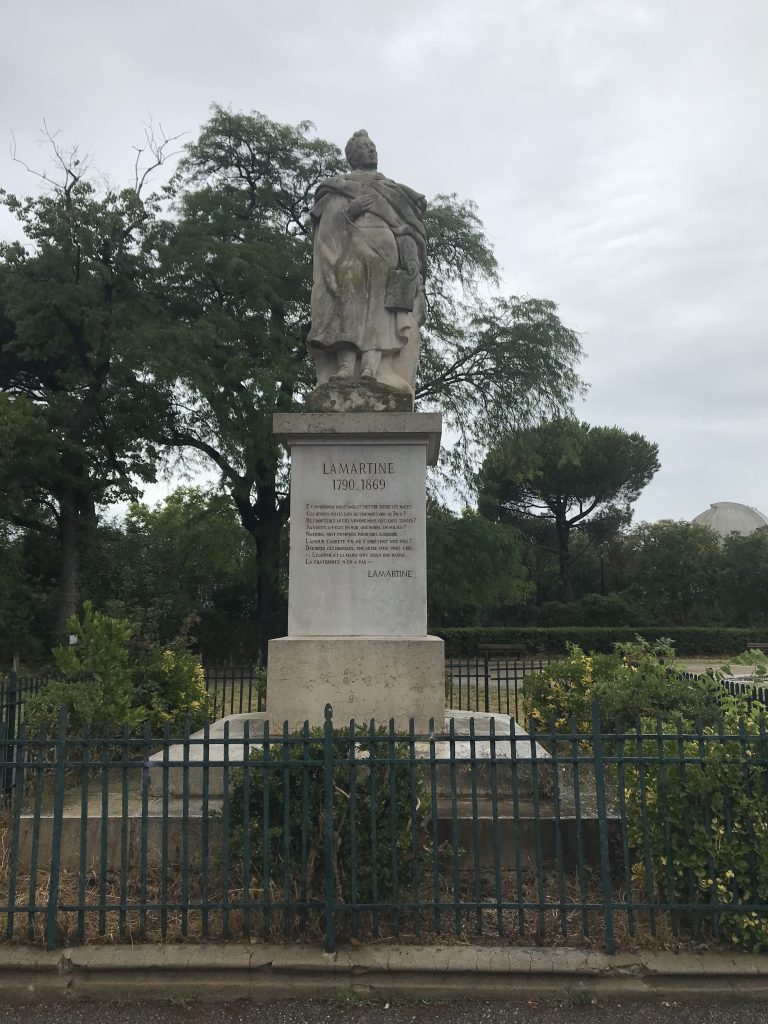
Behind the palace is a sprawling garden, known as the Jardin du Plateau with winding alleys and oak and elm trees. Amid the foliage, a statue of Alphonse de Lamartine [1790-1869], the French author, poet, and renowned statesman, is inscribed with one of his poems that resonates today:
Et pourquoi nous haïr et mettre entre les races
Ces bornes ou ces eaux qu’abhorre l’œil de Dieu?
De frontières au ciel voyons-nous quelques traces?
Sa voûte a-t-elle un mur, une borne, un milieu?
Nations ! mot pompeux pour dire : Barbarie!
L’amour s’arrête-t-il où s’arrêtent vos pas ?
Déchirez ces drapeaux ; une autre voix vous crie :
L’égoïsme et la haine ont seuls une patrie;
La fraternité n’en a pas!
*****
And why hate us and put between the races
These limits or these waters which the eye of God abhors?
From borders to the sky do we see some traces?
Does its vault have a wall, a boundary stone, a middle?
Nations! pompous word to say: Barbary!
Does love end where your steps stop?
Tear up those flags; another voice cries out to you:
Selfishness and hatred alone have a homeland;
The fraternity has none!
Text © Sarah S. King
WONDERFUL PHOTOS!
BRILLIANT TEXT
Thanks
Cecile
very interesting update on current conditions – well organized, presented and written
Thank you for taking me along with you on your visit.
Thanks for details of the renovation at Hotel de la Marine.
You saw a lot. Villa Carmingac sounds like a dream installation. Marseille beckons.
This is incredible! Well done.
comprehensive review and update on current developments in France –
excellent presentation, photos and writing
I like the comprehensive information you provide in your blog. The topic is kinda complex but I’d have to say you nailed it! Look into my page 63U for content about Thai-Massage.